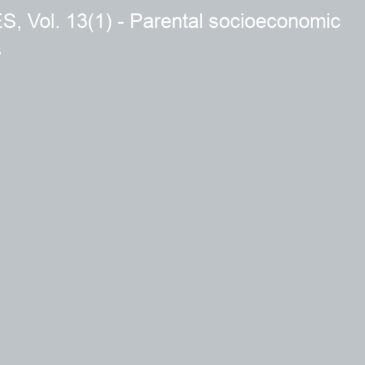Public health prevention, smoking cessation programs, and tobacco control policies have led to global reductions in prevalence of tobacco smoking. However, there are still groups of people, such as young adults and those experiencing homelessness, who are at increased risk for tobacco smoking. Learning more about risk factors could help us develop effective prevention strategies for these groups. Today in ASHES we review a population-based study conducted in Norway by Willy Pedersen and Tilmann Von Soest that examined the relationship between parents’ socioeconomic status and future nicotine dependence in their children.
What was the research question?
What is the pathway by which parental socioeconomic status is associated with nicotine dependence in children?
What did the researchers do?
Pedersen and Von Soest used data from the Young in Norway Longitudinal Study which surveyed 1,336 teens and young adults at 4 time points, when they were approximately 14-, 15-, 20-, and 27-years old. Participants answered questions about tobacco smoking for themselves, their friends, and their parents. They also answered questions about their secondary education experiences, use of social welfare and work history. The researchers categorized participants into 3 groups: non-smokers/casual smokers, low nicotine dependent daily smokers (LDS) and high nicotine dependent daily smokers (HDS). The researchers gathered data about parental education, work, and social welfare from public records. They used logistic regression to examine whether these youth and parental characteristics predicted later nicotine dependence in young adults. They followed up with path analysis to understand the pathways through which socioeconomic status as measured by parental education relates to teen and young adult smoking.
What did they find?
By age 27, 76.7% of the sample were non-smokers/casual smokers, 14.9% were LDS and 8.4% were HDS. We focus just on the first two groups here. Youth with parents who had a high school diploma or less education were about 2.5 times more likely than teens with better educated parents to be LDS instead of non-smokers/casual smokers. As the Figure shows, school conduct, grades, desire to quit school, and dropping out all mediated the relationship between parental education and LDS. This means that each of these variables were related to both parental education and LDS, and the direct relationship between parental education and LDS disappeared when these variables were included.
| Regression coefficient | Odds Ratio | |
| Parental education → School grades | -0.36 | |
| Parental education → Wish to quit school | 3.09 | |
| Parental education → Conduct problems | 0.66 | |
| Parental education → Low dependent daily smoking | 2.51 | |
| Parental education → School grades | 1.15 | |
| School grades → Low dependent daily smoking | 0.64 | |
| Wish to quit school → Low dependent daily smoking | 1.81 | |
| Conduct problems → Low dependent daily smoking | 1.07 | |
| No school graduation → Low dependent daily smoking | 1.56 |
Figure. Mediation model predicting low and high dependent smoking, controlling for gender, age, and ethnicity. Adapted from Pedersen & Soest (2017). Note. All relationships are statistically significant.
Why do these findings matter?
This study shows that low parental education is a good predictor of future daily smoking among offspring, but that the effect is indirect. Parents with less education are more likely to have children who have problems in school and are likely to drop out before completing high school. These school problems, in turn, increase risk for daily smoking. Parenting classes and early education interventions for children might break this cycle by preparing families for success in school. And we might need to target smoking cessation programs towards teens of parents with a high school education.
Every study has limitations. What are the limitations in this study?
Many of the measures analyzed in the study including nicotine dependence were based on self-report, which is not perfectly reliable. The study was conducted with a sample of Norwegians; therefore results might not be generalizable to other countries and regions. Finally, the study suffered from attrition that was higher among smokers and those from lower SES backgrounds, which might have led to systematic biases in the results.
For more information:
Individuals who are concerned about their own smoking or vaping can find resources to help them quit at smokefree.org. Others struggling with their substance use more generally may benefit from using SAMHSA’s National Helpline. For additional tools, please visit the BASIS Addiction Resources page.
— John H. Kleschinsky
What do you think? Please use the comment link below to provide feedback on this article.





Magdalene Mwangi June 29, 2017
Interesting to note.
Martin Buuri Kaburia June 30, 2017
Thank you for your great articles